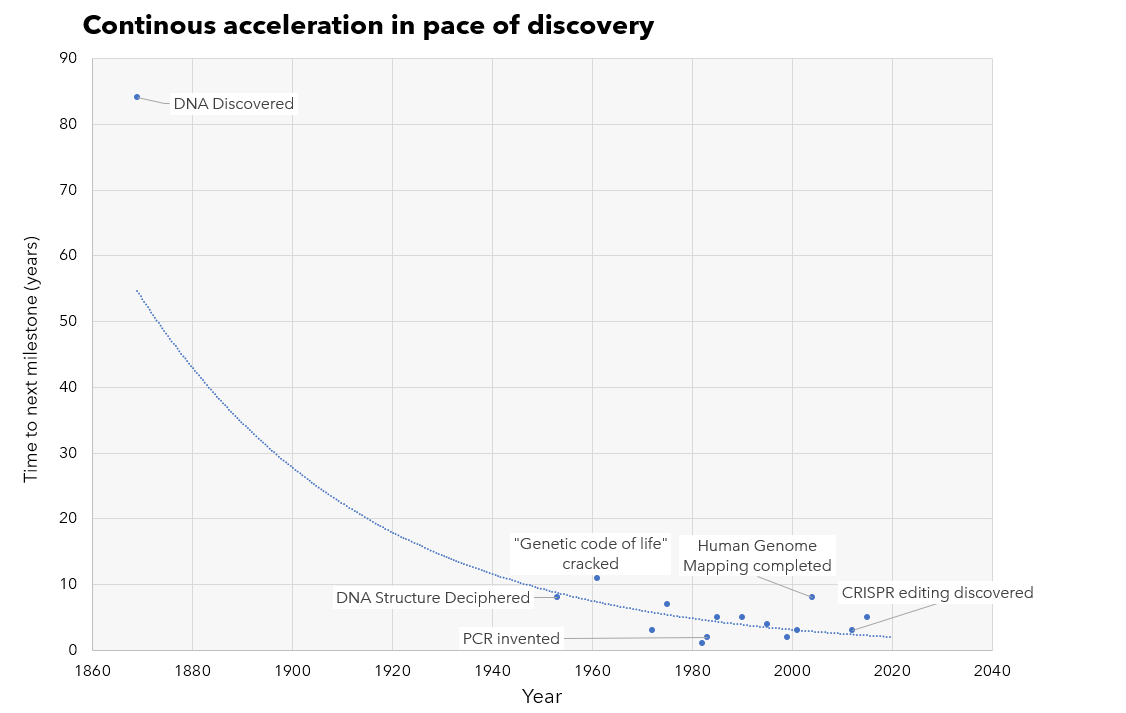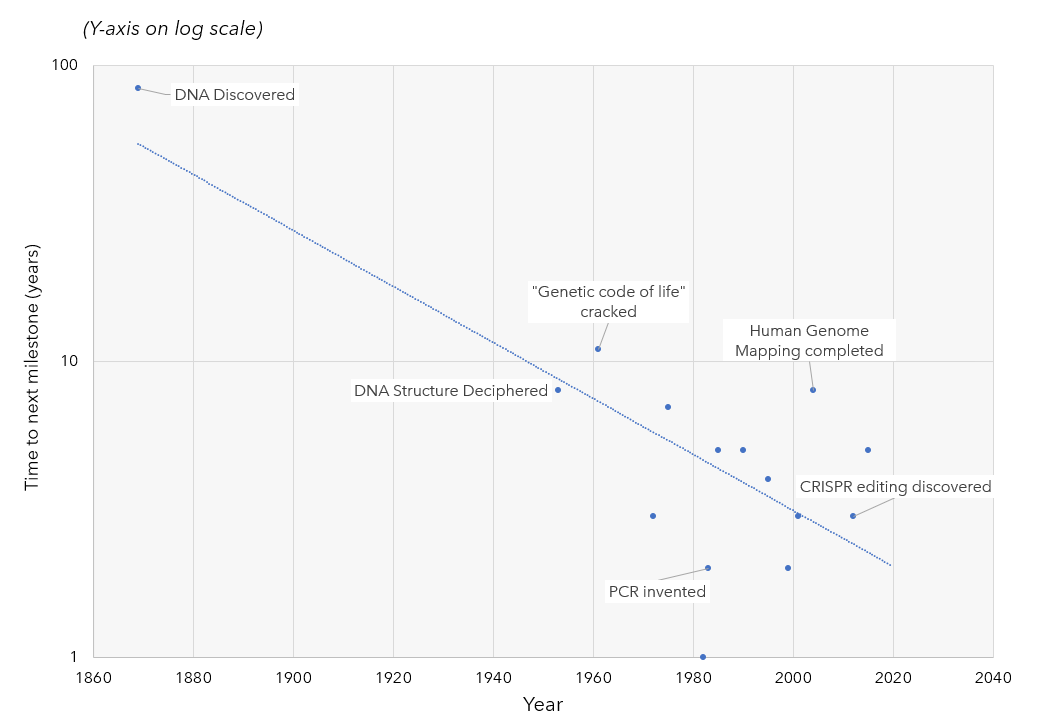“The farther backward you can look, the farther forward you are likely to see.” – Winston Churchill
Last year, the COVID-19 pandemic became a global emergency — transforming the lives of millions around the world. Despite the unprecedented calamity, there were some good developments in life sciences such as messenger RNA (mRNA) vaccines that were delivered at a record pace to fight the virus.
However, the advancements in modern medicine did not stop there. Technology-enabled rapid digital transformation across several industries, allowing some economic activity even with government lockdown orders. Beyond software and hardware solutions, the development of the CRISPR/Cas9 genome editing technique—which allows us to quickly cure various forms of diseases—went from discovery to productization in a relatively short time and won the 2020 Nobel Prize in Chemistry.
Looking back
It has been over 150 years since the discovery of DNA in the 1860s. Since then, we have learned a great deal about the DNA structure and the human genome encoded within the 23 pairs of chromosomes. The Human Genome Project published its finished sequence of the human genome in 2004. Less than a decade later, Jennifer Doudna and her colleagues discovered CRISPR/Cas9—a way for us to edit these genes. Three years after this, researchers in China applied the technology in editing human embryos. While the use of CRISPR for editing human embryos has been hotly debated, the rapid advancements in genetic engineering remain indisputable. The pace of progress which had a slow beginning has now transformed explosively in recent times (see below plots of notable milestones).
CRISPR/Cas9 enables us to solve complex problems in a plethora of fields. Recently, it has been applied to treat amyloidosis (a rare inherited disease), sickle cell anemia, blindness from genetic disorders, and in the fight against malaria (gene drive). The groundbreaking procedure has even been touted against cancer, HIV/AIDs, and so much more. We look forward to more developments and remain excited about the countless common diseases that could be solved through in vivo gene editing—infusing gene-drug therapies into a patient's bloodstream, and letting it find the deformed genes and cells to fix or deactivate, without invasive surgeries.
For investors, the recent pace of advancements in this field could present unique opportunities for above-average returns in the near term. Our task remains unchanged: identify these opportunities focusing on those with favorable risk-reward profiles for our clients. Naturally, we anticipate the continued non-linearity in the pace of advancements in this sector through the convergence of the fields of CRISPR and mRNA. In the near future, we might be close to making genetic diseases a thing of the past.












